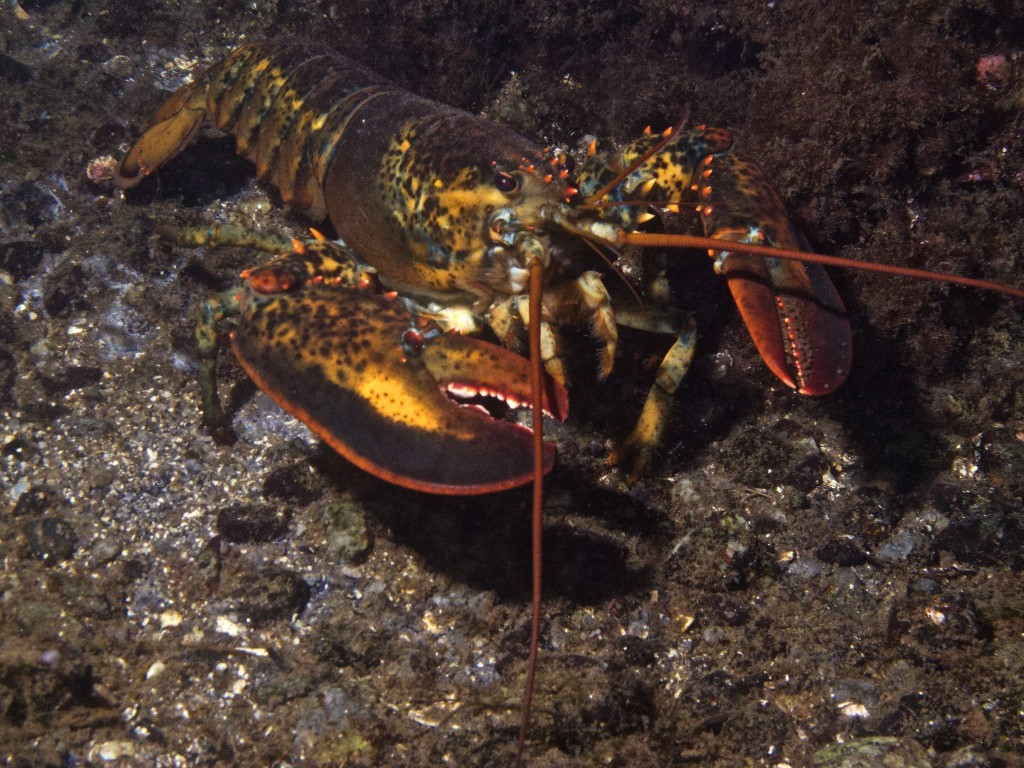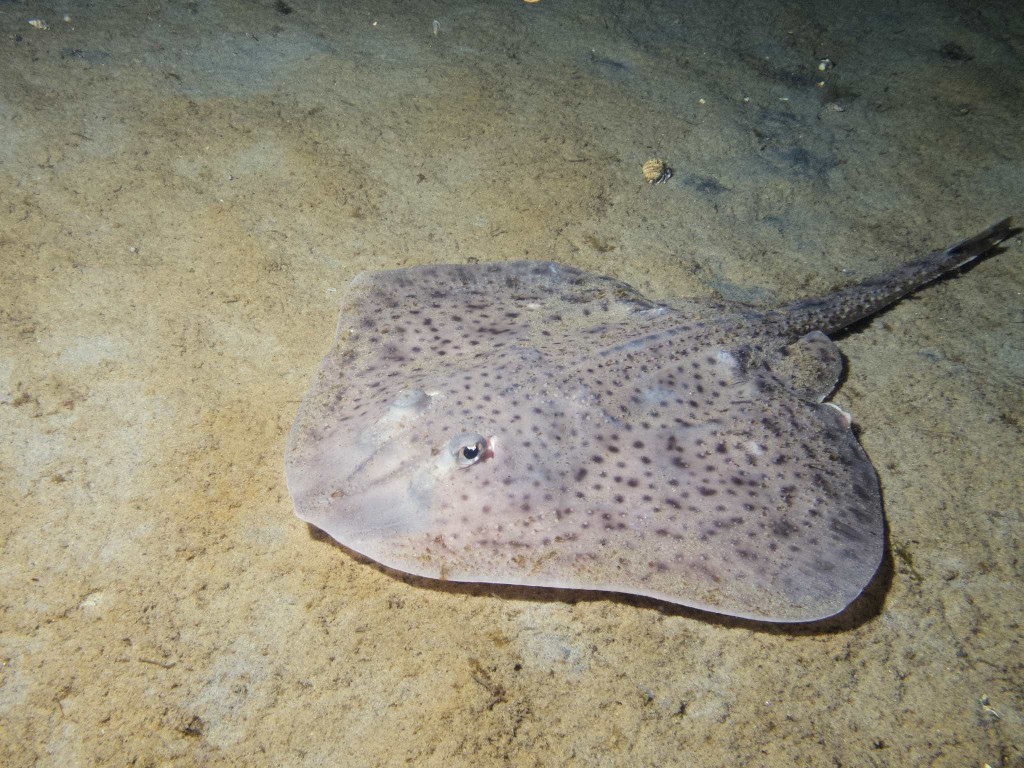Thursday night, I did a night dive off Back Beach with a group from East Coast Divers. It was an awesome dive; the water was relatively warm, the dive was easy and we saw a lot of stuff.
We met at the Beverly Burger King at 8, where Eric, the dive leader suggested we set up our scuba units ahead of time. His reasoning was that it would be easier to deal with them while there was still light, rather than bumbling around in the dark at the dive site. Then we went inside to discuss the site, and plan for contingencies.
We left for the site around 8:30, and got there about 15 minutes later. The water was calm, and the nearly full moon was reflecting off of it. The preparation paid off; we suited up and were soon in the water. We were in teams of 3, and I was buddied up with Dave and Amy. They proved to be good buddies; they spotted a number of things that I was then able to photograph.
The main point of a night dive is that things come out in the night that you can’t see during the day. And the highlight, for me, were the squids. I’d never seen them here in New England before, but I saw a bunch of them on this dive. We also saw a bunch of very small lobsters, a flounder, a small skate, and a shorthorn sculpin.
The water was surprisingly warm; at one point I looked at my computer and it was reading 61°. In a 7mm wetsuit, that’s balmy. I’m resigned to being cold on dives; this was an unexpected pleasure. There was only one major hitch: at various points in the dive, both legs cramped up hard. I found a bicycle type kick helped a bit, but it was especially bad when we were coming back down after surfacing for a moment; I hadn’t released as much air from my BCD as I thought; I had to kick to get down, and it cramped hard as I was trying to get down. I then popped back to the surface, was able to drain the air from the BCD, got back down and nearly landed on a squid. And of course, the camera had gone to sleep, and the light was in my way, and by the time I’d recovered from this graceless performance, the squid was gone.
Still, I did get some good pictures. The aiming light on the strobe works well for a night dive, and also makes a good auxiliary light.
I’d debated bringing along my large light; I had the strobe aiming light plus a small light that I attach to my mask (wearing it makes me feel like a Borg). I was concerned that the main light would be one more thing to carry, and would be in the way. Well, it was in the way, but it turned out to be lucky I brought it– the smaller head lamp flooded during the dive. Not only did it flood, but it must have generated a fair amount of battery gas and popped; when I was examining it later, the section with the screw threads on it had actually broken off. I suspect part of the reason it flooded was a design flaw shared by most small lights– it had no off switch. To turn it on or off, you tighten down or loosen the lamp head. I vaguely remember backing it off a turn on the surface to avoid blinding my buddies; it was probably enough to open it to flooding.
Still, it was a minor hitch on an otherwise very satisfying dive. I saw a lot, I had helpful buddies, and from a temperature standpoint, was an unusually comfortable dive. I’m glad I went










